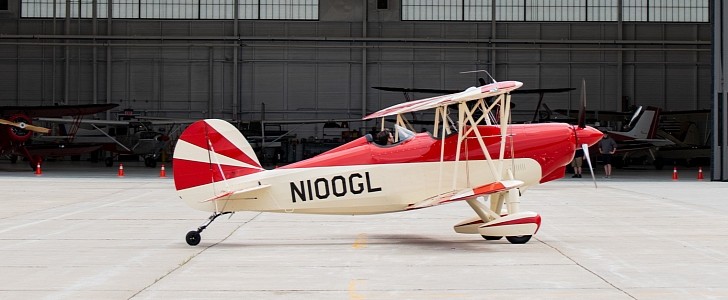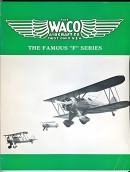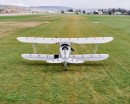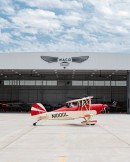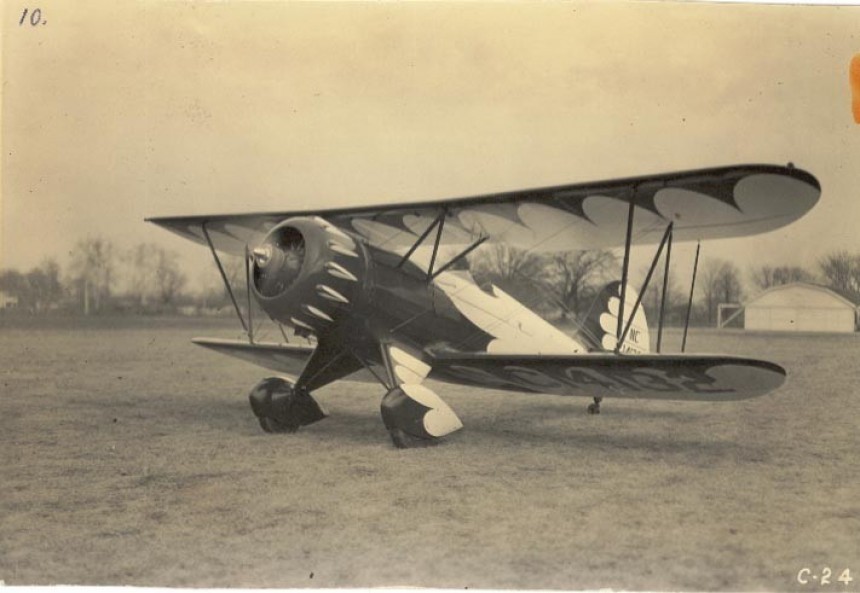They just don't make airplanes the way they used to, huh? Inane ramblings aside, there's a very good reason modern airplanes don't fly around with two sets of wings braced together by thin metal wires and covered with a canvas material you'd sooner use as an art easel.
But what gets lost in translation somewhat in our eyes when humans transitioned from primitive biplanes to Mach-2 capable jet fighters is something the average person might not even think of. Safe to say, you can't enjoy the wind rushing in through your hair and catch the scenery around you at 1,500 mph as you can when the top speed is barely over 100.
An experience you can enjoy to your soul's content with the delightful Waco F series. The closest thing to a drop-top sports car with wings you could find in early 1930s America. For those of you who don't spend their days with their faces buried inside books about old warbirds, Waco was a delightful curiosity of the American aerospace sector. Though, it may not have the name recognition of Cessna or Piper.
But during their original production run of the F-series biplane, they were some of the finest airframes in the sky. The F-series has its origins in the previous line of Waco biplanes, the 10/O-series. The new model was shorter in length by five inches, seven inches in wingspan, and five inches shorter than the outgoing model.
As a result, it was also 450 pounds lighter. In the days when aviation piston engines were massive and unreliable, power-to-weight ratios mattered just as much, if not more, than they did in race cars of the day. The single continental Continental W-670-6A seven-cylinder radial engine on the UPF-7 military trainer edition of this airframe generated 220 horsepower at maximum takeoff throttle.
Not bad for a modern hatchback, but insufficient for what most people would call expedient-powered flight. Most pilots tended to cruise at around 114 mph (183 kph) in the F-series Waco. Going much past 130 mph (209 kph) in this thing is liable to make the wings fall off. There was a slew of other engines available as well, but none were all that much better, and most were even worse.
Not that the three-person crew in a fully three-manned flight crew wanted to fly any faster than that, lest their faces start flopping around in the turbulent air like a Labradoodle with its face stuck out of a Prius. Further still, the Waco F-Series was designed to be a stable basic trainer, not an acrobat. It served in that role beautifully in both military and private service.
The fledgling U.S. Army Air Corps and its affiliated Civilian Pilot Training Program adored the type for the main reason it was easy for trainee pilots who'd never driven anything more powerful than a bicycle in some cases. With the first in a line of great American fighter planes on the horizon over the next decade, an airframe as forgiving and durable as the Waco was a necessity.
The tandem cockpit was also great for flight instructors barking orders about how not to crash the thing. One could only imagine the language used was verbose and colorful. In 1934, the type was redesigned into a new bespoke model, the YMF. With a longer and wider fuselage, better flight control surfaces, and better pilot comfort, as a result, many classify the type as the finest of its kind to fly, at least during its first production run.
The initial iteration of Waco Aircraft company folded in 1947, by which time the original 600 model production run for the F series was defunct for over five years. But in 1986, a small group of investors based out of Lansing, Michigan, purchased the rights to the Waco trademark after 39 years in purgatory.
From there, the newly christened WACO Classic Aircraft restarted production of the improved YMF airframe using the same design blueprints from 1934. The type is still being manufactured, slowly but surely, by a team of 34 master tradesmen/women who still take the timeless classic F-series airframe and bring it into the next millennium.
Nowadays, the chronically underpowered engines are replaced with 300 horsepower Jacobs R-755-A2 engines jetting 80 horsepower more than what the Civilian Pilot Training Program was flying around with the days pre WWII.
They also come with a full set of modern communications, avionics, and navigation systems that all modern airplanes can't fly without in the states. It sounds like a more fun prospect than going up in a timeless classic with an 80-year-old engine.
Thanks for tuning in on the final day of Open Top Month here on autoevolution.
An experience you can enjoy to your soul's content with the delightful Waco F series. The closest thing to a drop-top sports car with wings you could find in early 1930s America. For those of you who don't spend their days with their faces buried inside books about old warbirds, Waco was a delightful curiosity of the American aerospace sector. Though, it may not have the name recognition of Cessna or Piper.
But during their original production run of the F-series biplane, they were some of the finest airframes in the sky. The F-series has its origins in the previous line of Waco biplanes, the 10/O-series. The new model was shorter in length by five inches, seven inches in wingspan, and five inches shorter than the outgoing model.
As a result, it was also 450 pounds lighter. In the days when aviation piston engines were massive and unreliable, power-to-weight ratios mattered just as much, if not more, than they did in race cars of the day. The single continental Continental W-670-6A seven-cylinder radial engine on the UPF-7 military trainer edition of this airframe generated 220 horsepower at maximum takeoff throttle.
Not that the three-person crew in a fully three-manned flight crew wanted to fly any faster than that, lest their faces start flopping around in the turbulent air like a Labradoodle with its face stuck out of a Prius. Further still, the Waco F-Series was designed to be a stable basic trainer, not an acrobat. It served in that role beautifully in both military and private service.
The fledgling U.S. Army Air Corps and its affiliated Civilian Pilot Training Program adored the type for the main reason it was easy for trainee pilots who'd never driven anything more powerful than a bicycle in some cases. With the first in a line of great American fighter planes on the horizon over the next decade, an airframe as forgiving and durable as the Waco was a necessity.
The tandem cockpit was also great for flight instructors barking orders about how not to crash the thing. One could only imagine the language used was verbose and colorful. In 1934, the type was redesigned into a new bespoke model, the YMF. With a longer and wider fuselage, better flight control surfaces, and better pilot comfort, as a result, many classify the type as the finest of its kind to fly, at least during its first production run.
From there, the newly christened WACO Classic Aircraft restarted production of the improved YMF airframe using the same design blueprints from 1934. The type is still being manufactured, slowly but surely, by a team of 34 master tradesmen/women who still take the timeless classic F-series airframe and bring it into the next millennium.
Nowadays, the chronically underpowered engines are replaced with 300 horsepower Jacobs R-755-A2 engines jetting 80 horsepower more than what the Civilian Pilot Training Program was flying around with the days pre WWII.
They also come with a full set of modern communications, avionics, and navigation systems that all modern airplanes can't fly without in the states. It sounds like a more fun prospect than going up in a timeless classic with an 80-year-old engine.
